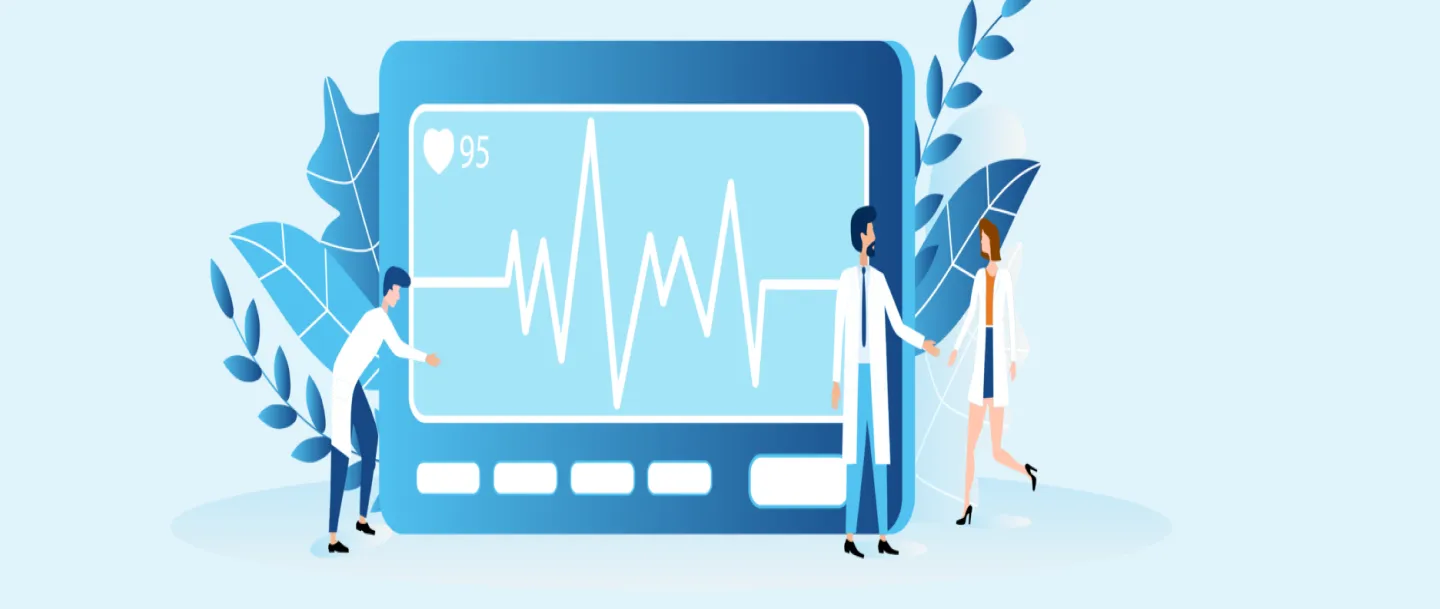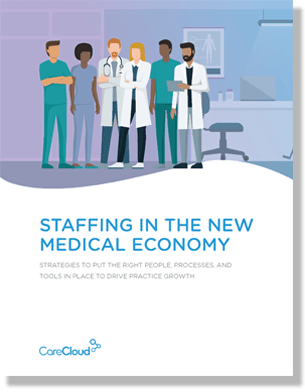Health Affairs research quoted, “Improving the U.S. health care system requires simultaneous pursuit of three aims: improving the experience of care, improving the health of populations, and reducing per capita costs of health care.”
These three admirable goals build healthcare’s foundation, and healthcare stakeholders find consensus on how to deliver them appropriately. During the pandemic’s outset, healthcare resources stretched thin, necessitating redirecting non-urgent medical sessions. Remote Patient Monitoring (RPM) system outshined maintaining contact between patients and physicians.
Among all pandemic-charged care delivery approaches, remote patient monitoring (RPM) is the most out-grown and has surpassed people’s expectations. Physicians, who always sided in-person analysis and patient bedside care, are now deviating towards remote care methods.
RPM incorporation in patient’s care plan advocates on behalf of patient health. If a treatment delivers undesirable results, real-time data through remote devices can alert physicians. It allows physicians to intervene on time, allowing targeted care before the patient’s condition deteriorates.
Further, technology such as artificial intelligence (AI) and its associated tech systems have excited caregivers. AI-empowered RPM opens visionary, actionable insights for treating patients.
Areas of AI Implementation within Healthcare
Artificial intelligence might seem a fancy name; however, it encompasses several note-worthy technologies which can be highly beneficial for healthcare in the future. Here are some sub-divisions of AI and what are their common forms seen in medicinal science:
- Machine Learning (ML) or Deep Learning (DL) – may be seen as personalized medicine, patient record management and information retrieval, patient monitoring, drug discovery, and infectious disease surveillance.
- Natural Language Processing (NLP) – It has started to be used in hospitals and special care delivery clinics as virtual health assistants and note transcription robots.
- Expert Systems – which includes many critical care decision support tools. These can be knowledge-based or non-knowledge-based CDSS. It also provides prediction, diagnosis, and treatment tools helpful for uncommon medical conditions.
- Computer Vision – radiological and histopathological image analysis
- Robotics – proven effective for geriatric care, end-of-life support, robotic surgeries (like robotic arms used alongside surgeons to reduce staff load), and emergency medicine.
Now that we know the power of AI, here are some techniques to improve care deliverance through AI-associated RPM.
Healthcare Proficiency
AI-enabled healthcare applications have proven high efficacy over the years. AI uses robotics, machine learning, and cognitive intelligence to gather passive data for delivering intricate clinical outlooks. Clinicians strive for a system that gives them a hawk’s eye view of the patient data. Gold shine on top is the robotic and artificial intelligence data accuracy, which makes health plan calibration easier.
Incorporating AI into RPM means taking accurate real-time data from the point of care and generating data mining sheets to achieve data-driven care plans.
De-burden HCPs
Several techniques have been initiated and utilized in healthcare data administration over the years. But none has proven results as AI and data mining methods. However, AI augments clinical data and reduces the burden on administrative staff and healthcare professionals (HCP).
Multiple repetitive tasks are conducted in practice essential to the service. Such tasks include:
- Patient data entry
- Appointment reminder and scheduling
- Automated review of laboratory data
- Auto-generated staff reports
- Detailed data analysis sheet accuracy
- Transporting imaging results
When menial practice tasks are taken over by AI-enabled software, devotion gets shifted to many attention-worthy notions:
- Out-reaching critical patients.
- Detecting care dangers in time.
- Masking adverse care effects before they become life-threatening.
Patient-centric Outcomes
Remote patient monitoring services has provided unprecedented access to digital data. AI incorporation in RPM delivers improved patient metrics such as blood pressure readings, heart rate fluctuations, sleep patterns, and brainwave patterns. Advancing such analysis with artificial intelligence can open a pathway to early disease detection, genetic evaluation, and higher care outcomes for chronic and terminally ill patients.
Moreover, many medical testings, such as electrocardiographs (ECG), electromyography (EMG), electroencephalographs (EEG), and Doppler ultrasounds, are all dependent on muscle, brain movements, or wave patterns. If these patterns are minutely analyzed through remote devices and programmed into clinicians’ data daily, they can provide a breakthrough for the treatment approach.
Hence, this AI-empowered RPM methodology, if headed right and its full potential utilized, can lead to terminally ill patients having better palliative care, longer life spans, and more interactive life for chronic geriatric patients.
Cost Effectiveness
Healthcare stakeholders have realized the credibility of AI-empowered analytics and what magic it can deliver for the future of healthcare. One advantage provided by artificial intelligence-optimized healthcare is cost saving.
Cost savings nurtured from care model modifications are the prime driver of AI implementation in healthcare. Recent Medicare’s implementation of a value-based care model and then AI-leveraged shift from symptomatic treatment to a proactive care approach helped improve care and cut costs simultaneously.
Thus, AI empowers healthcare by delivering constant in-depth care while reducing hospitalizations and improving patient experience. All in all, a beneficial pathway of practices to enhance care delivery.
CareCloud RPM
CareCloud amplifies AI to generate remote services that enhance patient experience management solution and boosts the practice’s stability factors.
- AI-driven data collection reports make critical decision-making easier for caregivers.
- Connected health devices with 24-hour technical support and critical care management.
- AI-managed bots minimize workload and staff stress.
- Natural Language Processing (NLP) capabilities allow accurate recording of physician’s notes and disease detection.
Conclusion
This guide walked you through techniques to improve care delivery dynamics using AI-enabled remote patient monitoring (RPM). We also discussed areas of artificial intelligence implementation within the healthcare space and how the CareCloud RPM solution can help medical practices become more profitable without increasing overhead costs.




